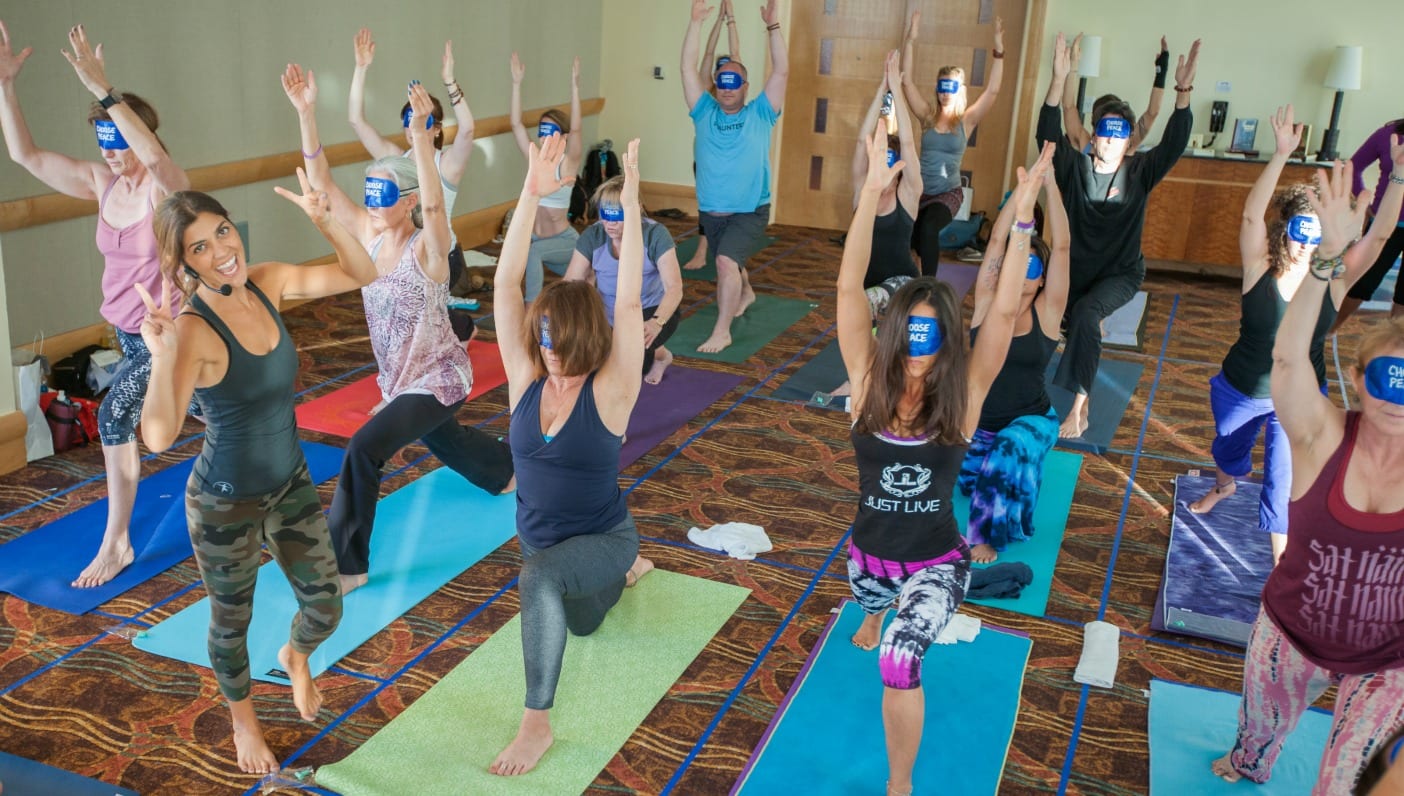
There are many things we might proclaim we’re capable of performing while blindfolded, but could yoga really be one of them?
Blindfolded yoga classes have been on a steady rise over recent years at studios like Jivamukti in New York, at Wanderlust Festivals far and wide, and now with a latest offering in Brisbane, Australia.
Aside from meditation, I’ve practiced yoga many times with my eyes closed, but only for a Sun Salutation or two before my eyes naturally reopen in anticipation of where I’m headed next—and whether or not I’m on the verge of falling off my mat and stepping on my neighbor’s toes.
I understand the importance of turning inward—to feel a pose from the inside out and move more intuitively, and to keep my focus solely on myself. But as a teacher I have seen the struggle in many of my students when I ask them to close their eyes—for some, there is a level of discomfort and unease that comes with it.
If there is any “goal” at all in yoga, it’s to invite forth a state of moving meditation—uniting mind and body as one for 60 minutes or so, and hopefully taking some of that off our mat and back out into the world. Is it possible that the playfulness of practicing yoga blindfolded might help to absolve this fear of exploring one’s own inner darkness?
I caught up with Rina Jakubowicz, a Los Angeles based yoga teacher from Miami, who’s been on a vision quest as a teacher of blindfolded yoga for the past few years, and swears by its effectiveness.
How does blindfold yoga help to improve the practice?
When you remove your most relied-upon sense—your sight—your other senses heighten naturally, forcing you to look within and observe the weaker areas that need strengthening. You will get physically stronger because you are more consciously using your muscles so as to not lose your balance. You also get a window into your deeper, inner-most thoughts, which could be making your practice suffer.
And because you’re blindfolded, you’re not competing with anyone in class and really tuning into yourself without judgment.
Why do you teach blindfold yoga?
The students who sign up for this class tend to be adventurous and willing to try something new. Their true strengths come out, and they notice how capable they can be once they’ve shifted mentally and adapted to their surroundings. This class tends to inspire those a-ha moments.
How do you help students overcome the fear of not being able to see where they’re going?
I setup some rules prior to starting: I tell them they should not take off the blindfold unless they absolutely have to, and I remind them they’re in a cozy yoga room where they’re safe.
Instead of removing the blindfold when they’re lost or overwhelmed, I tell them they should either take Child’s Pose, Mountain Pose, or Savasana, and take 10 deep, calming breaths. They can always choose to opt out of any pose, but I will encourage them to stay committed and keep the blindfold on regardless.
I am also very detailed with my instructions which helps to remove any doubt, and allows their focus to be on the real journey that’s happening within.
Have you ever encountered any problems with your students being blindfolded?
In every class people will fall and get frustrated and angry. This is part of it. But usually at some point, they start laughing and realize the fun in it and that it’s OK to fall. I’ll instruct some partner exercises and ask them to hold hands while doing balancing poses, which reminds them that sometimes we all need support from a stranger or a friend. By the end of the exercise they’re always smiling and laughing and having a good time.
As a student, I think you should always be wiling to dive into new challenges. So the next time you see a blindfolded yoga class, I encourage you to try it and see what inner world dwells within you!
This conversation has been edited and condensed.
—
 Andrea Rice is the Practice and Community Editor for Wanderlust Media. She is also a writer and yoga teacher. Her work has also appeared in The New York Times, Yoga Journal, SONIMA, mindbodygreen, and a variety of online magazines. Her teaching style is a blend of her love for music and intuitive movement, with emphasis on core strength. You can find her regular classes at shambhala yoga & dance center in Brooklyn, and often as a guest teacher for Deep House Yoga. Connect with Andrea on Instagram and Twitter.
Andrea Rice is the Practice and Community Editor for Wanderlust Media. She is also a writer and yoga teacher. Her work has also appeared in The New York Times, Yoga Journal, SONIMA, mindbodygreen, and a variety of online magazines. Her teaching style is a blend of her love for music and intuitive movement, with emphasis on core strength. You can find her regular classes at shambhala yoga & dance center in Brooklyn, and often as a guest teacher for Deep House Yoga. Connect with Andrea on Instagram and Twitter.